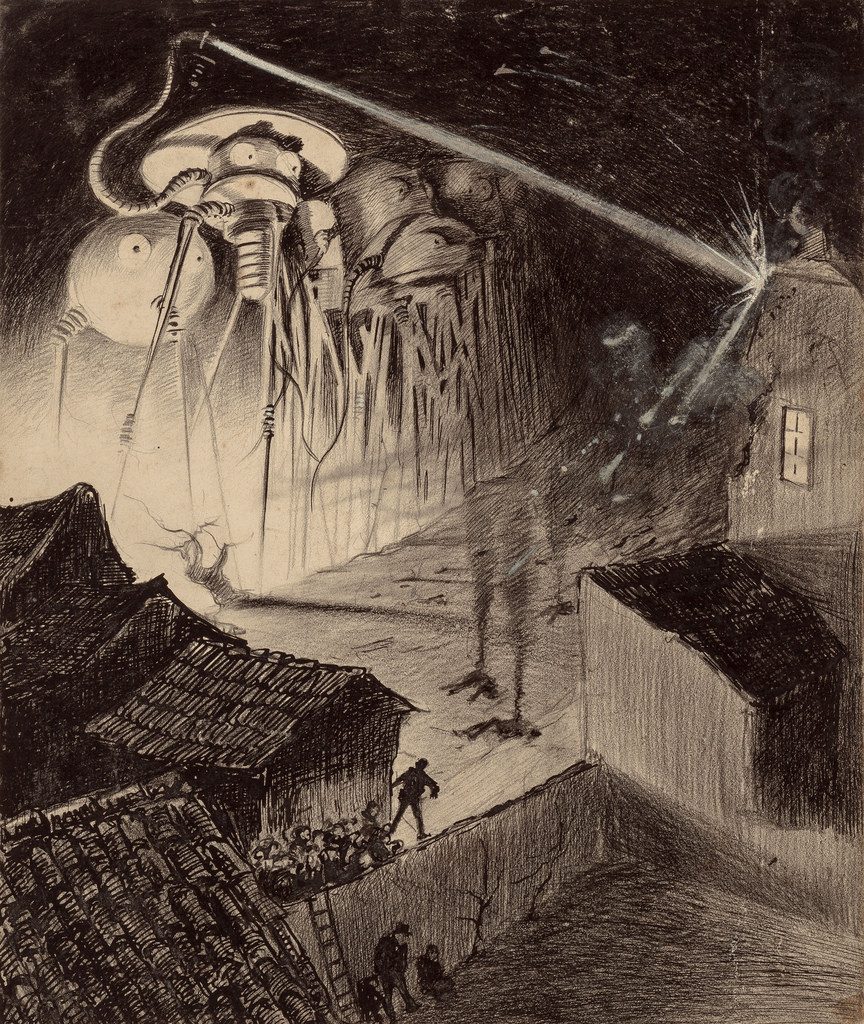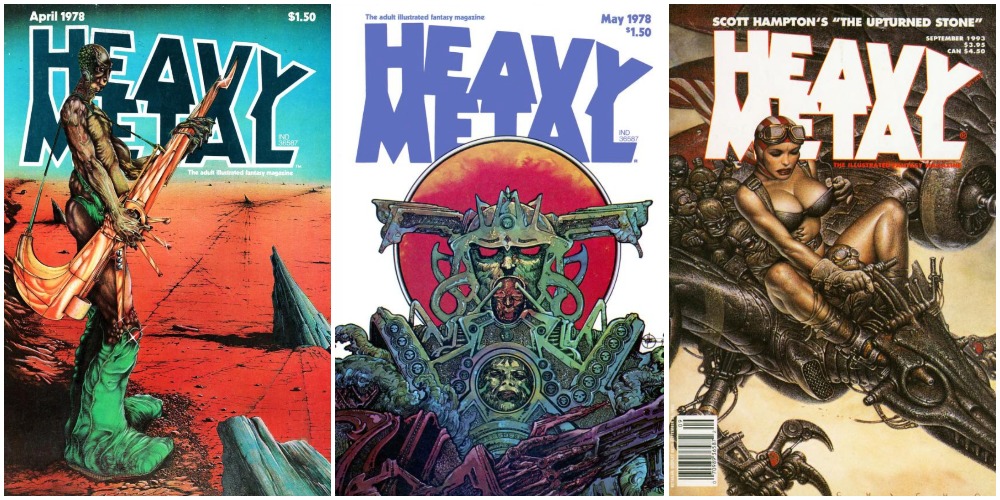The idea of time travel is probably as old as the feeling of regret, but the desire to go back in time is not the same as the theoretical notion that it might actually be possible to do so. Where, the Nerdwriter wonders above, did this idea originate? And where did time travel narratives come from in general? Time travel, he argues, “as a device to tell stories, is a relatively recent phenomenon.” And time travel as a specific genre of literature is just a little over a hundred years old.
An important point of clarification: We find instances of time travel—or at least a kind of parallax—in many ancient texts, where some characters experience time differently in different realms and dimensions and can thus see the past or future in our world. In the Ramayana, a figure named Kakbhushubdi lives like the Watchers in the Marvel Comics’ universe—outside of time, observing millennia passing. (It is said he sees the same events happen over and over, with different outcomes each time.)
This is not strictly what we mean by time travel. Yet many ancient stories do show humans going back in time, or going to sleep and waking up in the future, through divine agency. In the Buddhist Pali texts, we learn that the Devas experience one hundred human years as a single day (an idea echoed in the Bible). In the Japanese legend of Urashima Taro, a man visits the palace of the Dragon God, and when he comes back 300 years have passed. But the Nerdwriter is talking about something different than these many narrative instances of time dilation (hundreds of years before Einstein elaborated the concept), though the same devices appear in modern time travel stories.
A significant distinction, the video suggests, lies in the very concept of time. Many ancient people believed that time was cyclical—hence the many variations on the same themes in Kakbhushubdi’s experience—or that time was malleable, subject to divine interruption and disruption. After Darwin’s Origin of Species and the rapid acceptance of evolution (if not natural selection), popular notions of time changed. The modern time travel genre begins with broadly Darwinian ideas as a central premise. In the popular imagination, evolution meant inevitable, linear progress, and thus was born a form of literature called the Utopian Romance.
One such novel, Edward Bellamy’s 1888 Looking Backward, has the distinction of being the third-largest bestseller of its time, after Uncle Tom’s Cabin and Ben Hur, with over one million copies sold. Why haven’t you heard of it before? Probably because the book envisions a character who falls asleep and wakes up in a socialist utopia 113 years in the future (the year 2000). It exerted significant influence on the many socialist movements of the time, and “Bellamy clubs” sprang up around the country, advocating for the nationalization of private property. Few Americans, at least, have learned about the widespread popularity of socialism in the U.S. during the late 19th century because… well, you tell me.
But Bellamy’s ideas are embedded in the genre, in work after work we are familiar with (take the parody version in Futurama). In the modern time travel novel, utopias “are no longer on a lost island or a different world, they were in the future.” This observation applies most readily to a more famous foundational text from 1895, H.G. Wells’ The Time Machine, which borrows from Swift’s Gulliver’s Travels, but sets the action not in a distant land but in the very distant future, the year 802701. Wells’ “subterranean workers, the Morlocks, and the decadent Eloi” who profit from their labor, notes the British Library, do not differ that much from humans of the past or the present—they have evolved technologically and physically, but are still subject to exploitation and violence.
Where Gulliver’s Travels can be read as a misanthropic undermining of notions of cultural superiority, Wells’ novel satirizes the idea that human evolution implies an improvement in human beneficence. The book set a pattern “for science-fiction to critique extreme developments of class.” In both Bellamy and Wells, time travel—whether achieved by science or a Rip Van Winkle sleep—presents an occasion for utopian or dystopian allegory. The time travel genre took on a new dimension after Einstein, when the science of relativity replaced Darwinian evolution as the central preoccupation, and paradoxes and rules became central concerns. This shift highlights another important feature of the modern time travel genre—its obsession with cause and effect, and therefore with the very nature and possibility of story itself.
Related Content:
H.G. Wells’ 1930s Radio Broadcasts
George Orwell Reviews We, the Russian Dystopian Novel That Noam Chomsky Considers “More Perceptive” Than Brave New World & 1984
How to Recognize a Dystopia: Watch an Animated Introduction to Dystopian Fiction
Josh Jones is a writer and musician based in Durham, NC. Follow him at @jdmagness




